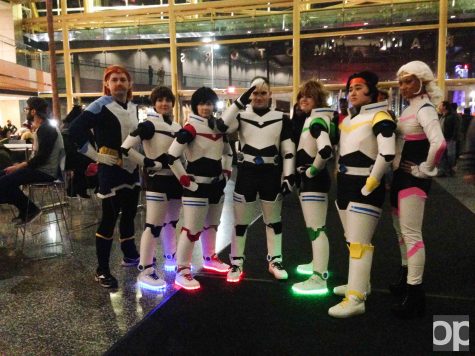Comics: Unwrapped Editions
When people think about the comic medium, often times the two positions that come to mind in the making of a comic are the artist and the writer. And while they are two of the most important individuals in the whole process, a lot of others are needed to make it look the best it can be and read coherently. This is attributed to the editor(s), inkers, letterers and colorists, along with some other individuals with specific titles.
Regardless of the large group of people that go into the making of a comic, a good book is nothing without a great artist. Sure, the story can be solid, but at some point the comic needs to be a comic and not simply a novel, which, of course, is where the artist is most important. And the better the artist, the better the book.
Throughout the years, comic art has evolved from a simple draw-to-get-a-paycheck thought process by those in the industry and has now become an art form. Fans of a specific artist will spend thousands of dollars for original pieces from their favorites, and will collect these highly coveted comic pages or panels. Among the most popular of these art pages are the original pencils from published works.
Original comic art from popular comic stories or novels are some of the most sought after collectors items, second only to owning the incredibly rare (and expensive) original printed copies of old serials, first appearances of characters, or so on. So there comes a time when one must ask, “At what point am I spending too much money,” or even, “Is it worth it to buy these expensive pieces in the first place.” Well, in recent years, DC Comics has created a slight solution- Unwrapped Edition Books.
In Unwrapped Editions of popular comic stories, the art is completely in the artists original pencils, with little to no inkings of the original pencil work anywhere in the book. This allows for fans to have their favorite original art pieces at home, but at a fraction of the cost. And, while it is not the original pieces, it does include more than just a single page, telling the entire storyline, including the text bubbles.
At the time of writing, these Unwrapped Editions have spanned only the Batman and Blackest Night comics lines as far as collected editions go. In single issue format (which are also referred to as Director’s Editions for some reason) there have been quite a few characters, including Superman and the Justice League. More are coming down the pipeline, with interest in these penciled pages rising exponentially in the last few years.
Now, some may ask why it is so important that a comic fan would buy these versions of the books when there are inked, colored and finished versions out on store shelves right now. And, while this is a valid quandary, the Unwrapped Editions of these comics aren’t necessarily for everyone or even the casual reader- it is for the artists and super fans
While anyone can buy and read an Unwrapped book without problems, the pencil-work, detailed strokes and shown eraser marks (that do not in any way diminish the overall look of the piece) allow for aspiring or professional artists to get a greater perspective into how their favorite artists create their comics. It provides the traces and little details that get taken away in the inked and colored final product.
Yes, these editions work in tandem with artists to allow for fans to get pencil works for cheaper, it also provides a great fan service. Oftentimes, the single issue Unwrapped/Director’s Cuts include interviews with the artist and writer of the comic, and their creative process for the book, and their vision for what they aspired it to be. This gives depth into a creative process that may be far more complicated and intricate than one might have believed.
Recommended Reading


